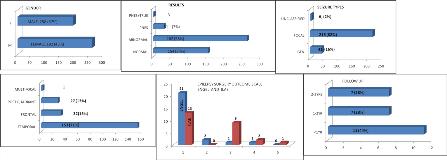Experience of Outpatient-Based Short Video-EEGs Merits and Demerits: An Indian Experience
Abstract number :
1.137
Submission category :
3. Neurophysiology / 3A. Video EEG Epilepsy-Monitoring
Year :
2018
Submission ID :
498028
Source :
www.aesnet.org
Presentation date :
12/1/2018 6:00:00 PM
Published date :
Nov 5, 2018, 18:00 PM
Authors :
Anand G. Diwan, Dr Vasantrao Pawar Medical College and Reesearch center, Hospital, Nashik and Ashok Pillai, Amrita Institute of Medical Sciences
Rationale: Epilepsy is a chronic disorder of the brain that affects people of all ages. Approximately 50 million people worldwide have epilepsy, making it one of the most common neurological diseases globally. Nearly 80% of the people with epilepsy live in low- and middle-income countries. People with epilepsy respond to treatment approximately 70% of the time. About three fourths of people with epilepsy living in low- and middle- income countries do not get the treatment they need. In many parts of the world, people with epilepsy and their families suffer from stigma and discrimination. With less than 2000 neurologists and less than 40 established Epilepsy surgery centers across India, this is difficult task.1)To create a model for out-patient-based evaluation of patients with Epilepsy in small city which can be accessed by majority of medically refractory epileptic patients. 2) To understand problems, cost, manpower, safety, effectiveness and usefulness of such study . 3) To compare epilepsy surgery types and its result with other already established national tertiary centers. Methods: In a tier 2 city, Nashik, India, pre surgical evaluation was carried out for medically refractory epilepsy patients purely on out-patient basis, which included daytime short Video EEG, MRI 1.5 or 3 Tesla, Neuropsychiatric assessment and if required functional imaging PET, SPECT scan or MEG. Patients required hospitalization only during surgery ranging from 4-7 days.For 3 patients invasive (surface and stereo-EEG was done by referring patient to higher center, AIMS, Kochi). Results: In last 4 years (June 2014 to May 2018), total 450 short VEEG were carried out on OPD basis.M-258 (57%), F-192 (43%), Seizure types- Generalised 41(16%), Focal-215 (82%), Unclassified 6(2%). Psychogenic Non Epileptic seizures (PNES) were seen in 31 patients (7%) and combination of PNES+ true Epilepsy was noted in 2. No abnormality in short VEEG was noted in 154 patients (34%).Amongst focal epilepsy, localization was for temporal 153 (71), frontal 32(15%), post quadrant-27 (13%)and multi-focal1. Surgically remedial Epilepsy was fund in 108 patients, out of which 25 patients successfully undergone Epilepsy surgery. Anterior temporal lobectomy –Amygdalo-hippocamcetomy (ATL-AH) was performed in 12 pts ( Left-7, Right-5), Corpus callosotomy (CC)-4, Focal resection for FCD-4, Hemispherotomy-3, TPO disconnection1, Deep brain stimulation for refractory generalized Epilepsy-1.Epilepsy surgery outcome (follow up 1mth to 3yrs), scale was for Engel 1 -21, (ILAE1-3), Engel2-2, (ILAE2-0), Engel3-1,( ILAE3-9), Engel4-1, (ILAE4-2), ILAE5-1. Complications of Subdural hematoma was seen in 1patient who underwent Left ATL-AH, but recovered fully conservatively in less than week period. Another adult patient of perisylvian syndrome developed transient mutism after corpus callosotomy and recovered fully in 4 days. 2 patients underwent awake craniotomy and 2 surgeries were carried out with the help of Electro-corticography. Conclusions: Based on this personal short experience, outpatient-based pre-surgical evaluation is feasible, practical and also cost effective. Results are encouraging in confirming seizure types and syndromes and also to evaluate potential surgical candidates. Bulk of surgically treatable epilepsy is temporal lobe epilepsy arising from mesial temporal sclerosis. With radiological lesion and clinico-electrical concordance, this group is easily cured. With the help of higher center, difficult epilepsy surgeries like FCD resection, hemispherotomy, TPO disconnection is also possible. In long term, it is required and very helpful to create many such small centers throughout the developing countries like India. Funding: Nil
